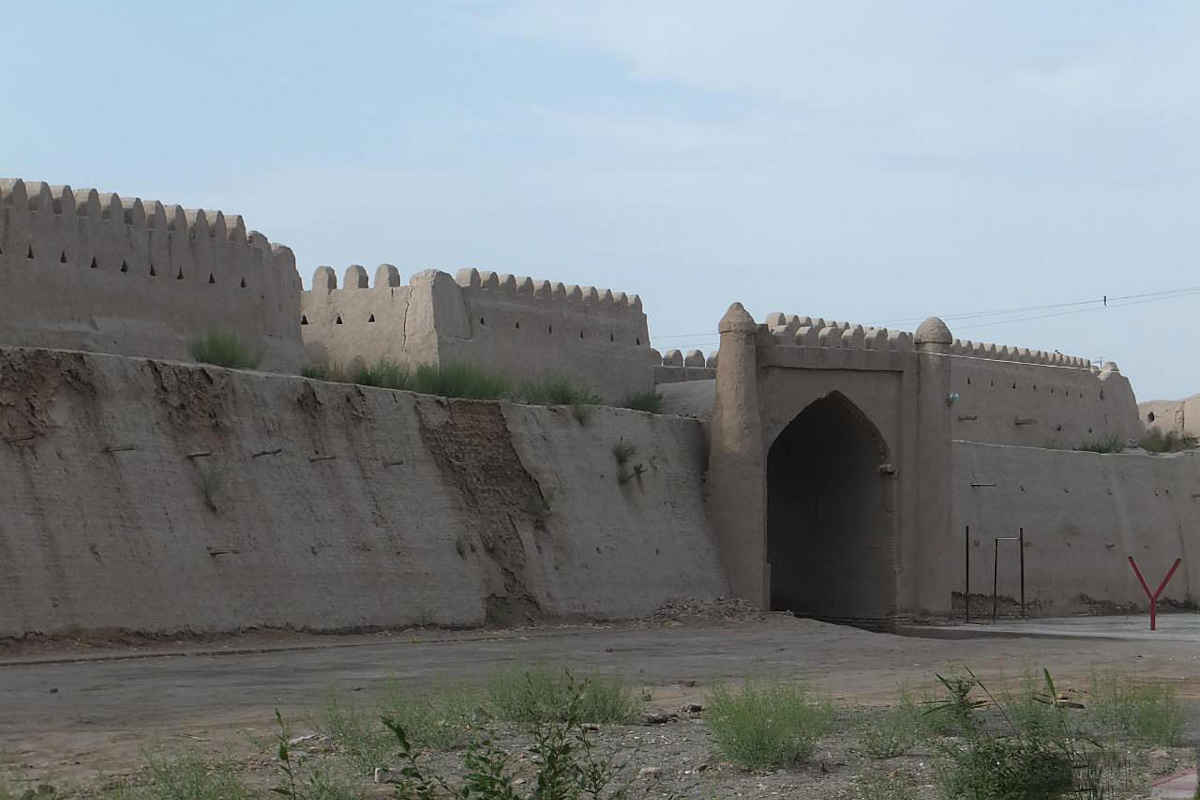Khiva - Dishan Kala
Dishan-Kala means “outer city”, “outer fortress”. After another raid on Khorasan, 20,000 inhabitants of the south were forcibly relocated to Khorezm and its capital Khiva. The walls of Dishan-Kala were built in 1842 – 1889 for additional protection of the city of Khiva from frequent Turkmen attacks. The length of its walls is about 6 kilometres.

The Khan’s suburban palaces, Rafanik and Nurullabay, also came within the city limits. Since then, the city’s great ring became known as Dishan-Kala. Dishan-Kala was built according to indigenous methods – each family from all over the khanate was assigned an employee for the period of 12 to 30 days annually, which meant that every young man had to work here.
The reinforcement of Dishan-Kala was necessary not only to provide security for the residents of the suburbs, but also to protect the property of the khan and the nobility outside the walls of Ichan-Kala.
In the interest of feudal property, Alla-Kuli-khan did not stop building the walls of Rabad until he extended the city’s defences, which were quite dangerous with the comparatively small number of its inhabitants and the insignificant army the khan could possess at that time.
According to popular legend, the walls were built in just six weeks and a quarter of the entire land was collected for the work. It was said that the entire peasant population of Beshkal (Mangit, Shavat, Khiva, Khazarasp and Urgench) was gathered for the construction of the walls of Dishan-Kala and forced to work for three years (36 working days).
There were 10 gates lined with baked bricks arranged in the walls of Dishan-Kala, namely (clockwise):
1) Hazarasp – to the east along Hazarasp Road.
2) Pishkanik – to the east, named after the village of Pishkanik.
3) Bagishamol – in the south, named after a large land garden of Allakuli-khan (earlier they were named after Angarik village).
4) Sheikhlar – in the south, after a village that belonged to the Waqf of Pahlavan-Mahmud Gumbez.
5) Tazabagh – in the south, named after the land garden of Muhammad-Rakhimkhan II, and earlier it was named after kishlak Sirchali.
6) Shahi-Mardan – in the west, known as Kishlak.
7) Dash-ayak – in the north, named after the village.
8) Kosh-Darvoza – in the north along the road to Urgench, named after two (kosh) arched gates.
9) Gadaylar – in the north; the road to them leads through the Gadaylar (beggar) quarter to Dishan-Kala, from which they take their name.
10) Gindum-Kan – in the north, named after the village.
Dishan-Kala was an ordinary Rabad of a Central Asian town: the main mass of the population consisted of craftsmen, day labourers, traders and a small number of farmers.
Dishan-Kala is less crowded than Ichan-Kala. It is irrigated by the aryks (water canals) and one often finds its own gardens and tree plantations here, which are completely absent in Ichan-Kala.
Dishan-Kala housed, as it does today, bazaars, shops and rows of craftsmen from the city of Khiva. Of the historical monuments of Dishan-Kala, only the construction of the slave market in the time of Allakuli-Khan deserves special attention.
